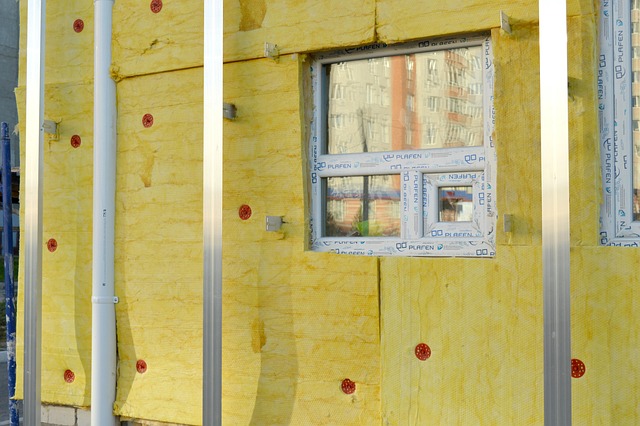In recent years, the intersection of audio streaming and visual technology has moved from the realm of abstract research into everyday entertainment. With a single click, a user can send an audio stream from Spotify to a large display and watch the beat dance across the screen, creating a multisensory experience that elevates both listening and watching. This article explores how Spotify’s robust streaming infrastructure, combined with modern monitor technology and visualization software, allows home theaters, bars, and even living rooms to transform into dynamic audio‑visual hubs. We’ll examine the technology behind the process, practical setup tips, and what the future holds for big‑screen music experiences.
The Rise of Music Visualization on Television
Music visualization has a long history, from early oscilloscopes that turned sound into electric art to sophisticated software that generates 3D worlds synced to rhythm. The move onto television and large displays began in the 2000s, when consumer TVs started supporting HDMI input and higher refresh rates. Modern audiences now expect their entertainment systems to do more than play a song; they want an immersive show that reacts in real time. Television screens, once static, now host visualizers that turn Spotify playlists into kinetic canvases, making music a visual event as well as an auditory one.
Spotify’s Streaming Technology
At its core, Spotify delivers high‑quality audio through adaptive streaming protocols. The platform streams compressed audio files that are re‑encoded on the fly to match bandwidth conditions, ensuring consistent playback across devices. For visualization, the audio data can be extracted either through Spotify’s Web Playback SDK, which exposes the raw PCM stream to developers, or via the Desktop App’s output that can be routed to external software. The ability to capture the audio signal in real time is essential for any visualization system that wants to reflect the nuances of a track—its tempo, key, and dynamic changes.
- High‑resolution audio streams up to 320 kbps.
- API access to audio features such as tempo and key.
- Cross‑platform compatibility: Windows, macOS, Linux, Android, iOS.
- Low latency, crucial for synchronized visuals.
Visualizing Audio: The Science
Converting a stream of sound into an image involves several signal‑processing steps. The audio signal is first broken into short frames—typically 20–50 milliseconds—then transformed via a Fast Fourier Transform (FFT) to reveal its frequency spectrum. This spectral data is mapped to visual parameters such as color, shape, and motion. Artists and developers choose different mapping strategies: some emphasize bass frequencies with pulsing circles, while others highlight treble with animated particles. The choice of mapping depends on the desired aesthetic and the target hardware’s capabilities.
“Visualization is not merely an aesthetic overlay; it is a translation of acoustic data into a visual language that can be interpreted by the eye.” – Dr. Elena Morales, Audio‑Visual Systems Researcher
By aligning visual events with musical cues—beat detection, chord changes, and dynamic peaks—visualizers create a seamless partnership between audio and imagery. This partnership is especially powerful when displayed on large monitors, where subtle movements become dramatic and engaging.
Modern Monitors: Display Technology
The evolution of display technology has been pivotal for audio visualization. High refresh rates (120 Hz and above) reduce motion blur, ensuring smooth animations that keep pace with fast‑moving music. Quantum‑dot and OLED panels offer wider color gamuts, making the colors of visualizers more vivid. Furthermore, many modern monitors now support HDR10 and Dolby Vision, allowing dynamic range adjustments that can match the intensity of a song’s crescendo. Finally, the rise of ultrawide and curved screens gives visualizers a larger canvas, enabling expansive scenes that envelop the viewer.
- 120 Hz or higher refresh rates for fluid motion.
- Wide color gamut for richer visual palettes.
- HDR support for dynamic contrast.
- Curved or ultrawide panels for immersive layouts.
Syncing Spotify with Visuals
To achieve perfect alignment between Spotify audio and visual output, the system must minimize latency across all components. The first step is to capture the audio signal directly from Spotify’s output, bypassing the operating system’s audio mixer to avoid added buffering. Next, the visualization software processes the signal in real time, typically with a sub‑10‑millisecond latency. The display must be set to the lowest possible input lag setting, and the connection between the computer and monitor should use HDMI 2.1 or DisplayPort 1.4 to support the required bandwidth. With these optimizations, the viewer experiences a visual that feels inseparable from the music.
Hardware Setup
Creating a high‑quality audio‑visual environment starts with choosing the right hardware. A mid‑range GPU that supports 4K output ensures that the visualizer can render complex scenes without stutter. An external sound card with low latency can further reduce audio delays, especially if the computer’s onboard audio is bottlenecked. For the display, a monitor or TV with a dedicated low‑latency mode—often labeled “Game Mode”—helps keep visual timing tight. Finally, a stable Wi‑Fi network or Ethernet connection prevents buffering interruptions in Spotify’s streaming.
- Computer: At least a quad‑core CPU, 8 GB RAM, dedicated GPU (e.g., NVIDIA GTX 1660).
- Audio Interface: USB DAC with < 5 ms latency.
- Display: 4K UHD monitor, 120 Hz, HDR10, low input lag.
- Connection: HDMI 2.1 or DisplayPort 1.4 cables.
- Software: Spotify client, visualizer (e.g., Wallpaper Engine, Resolume), audio routing tool.
Software and Plugins
There are a variety of software solutions that can transform Spotify audio into visual spectacles. Open‑source options like “Audio Reactive Wallpaper” for Windows, or “Sonic Visualizer” on macOS, let users design custom visual styles. Commercial tools such as Resolume Arena or VJ software suites offer advanced effects, real‑time beat detection, and support for multiple audio sources. Additionally, plugins that tap into Spotify’s Web Playback SDK can directly feed the audio stream to the visualizer, eliminating the need for separate capture tools. The key is to choose software that supports low latency and offers customizable mapping of audio features to visual elements.
Future Trends
The future of big‑screen music visualization is poised to become even more interactive. Augmented reality (AR) headsets and mixed‑reality displays could overlay 3D visualizers directly onto the environment, making the viewer part of the performance. Machine‑learning algorithms might analyze a track’s emotional content and adapt the visuals accordingly, creating mood‑synchronised scenes. Moreover, the integration of spatial audio through Dolby Atmos or Samsung’s 360 Sound could give visualizers a directional component, aligning motion with audio channels. As hardware continues to improve—especially with higher refresh rates and larger form factors—visualizations will move from background elements to central performance pieces.
Conclusion
Spotify’s seamless streaming, combined with modern display technology and sophisticated visualization software, has turned large screens into dynamic music theaters. By understanding the technical pipeline—from audio capture to real‑time rendering—and by selecting hardware that prioritizes low latency, anyone can create an immersive experience that brings tracks to life visually. As technology evolves, the boundary between audio and visual will blur even further, opening new avenues for creativity and entertainment. Whether you’re a casual listener, a DJ, or a home‑theater enthusiast, the tools are now available to turn your living space into a pulsating, music‑driven stage.



